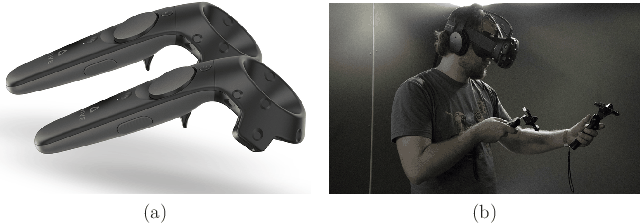
Next: 10.4 Social Interaction Up: 10.3 Manipulation Previous: Remapping Contents Index
 |
The development of interaction mechanisms for manipulation remains one of the greatest challenges for VR. Current generation consumer VR headsets either leverage existing game controllers, as in the bundling of the XBox 360 controller with the Oculus Rift in 2016, or introduce systems that assume large hand motions are the norm, as in the HTC Vive headset controller, as shown in Figure 10.12. Controllers that have users moving their hands through space seem not too far from the Minority Report interaction mechanism shown in Figure 10.10. Others are developing gesturing systems that involve no hardware in the hands, as in the Leap Motion system that was shown in Figure 9.25 from Section 9.4. These are perhaps updated versions of the vision of ``goggles and gloves'' that was popular in the 1990s (recall Figure 1.30(c) from Section 1.3). Rapid evolution of methods and technologies for manipulation can be expected in the coming years, with increasing emphasis on user comfort and ease of use.
Steven M LaValle 2020-01-06